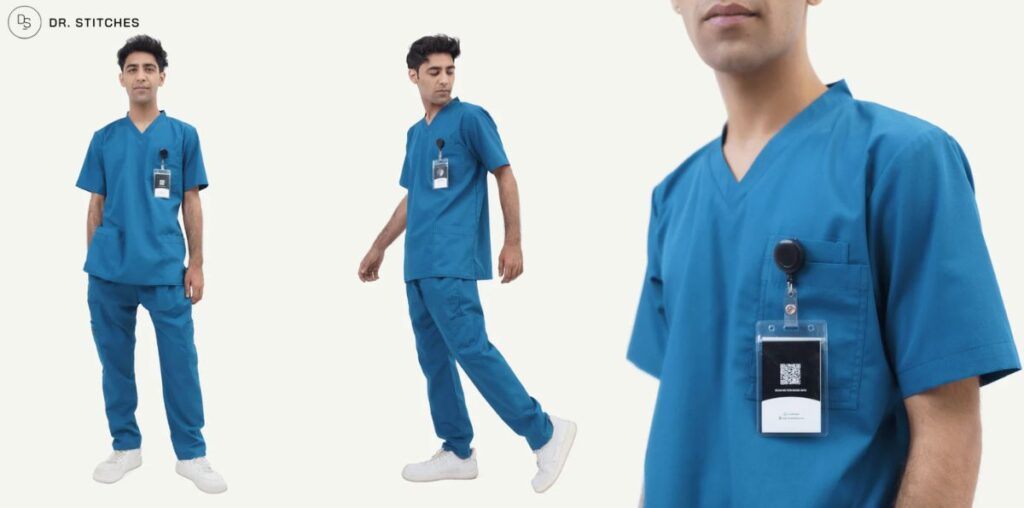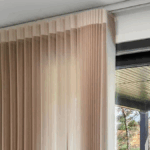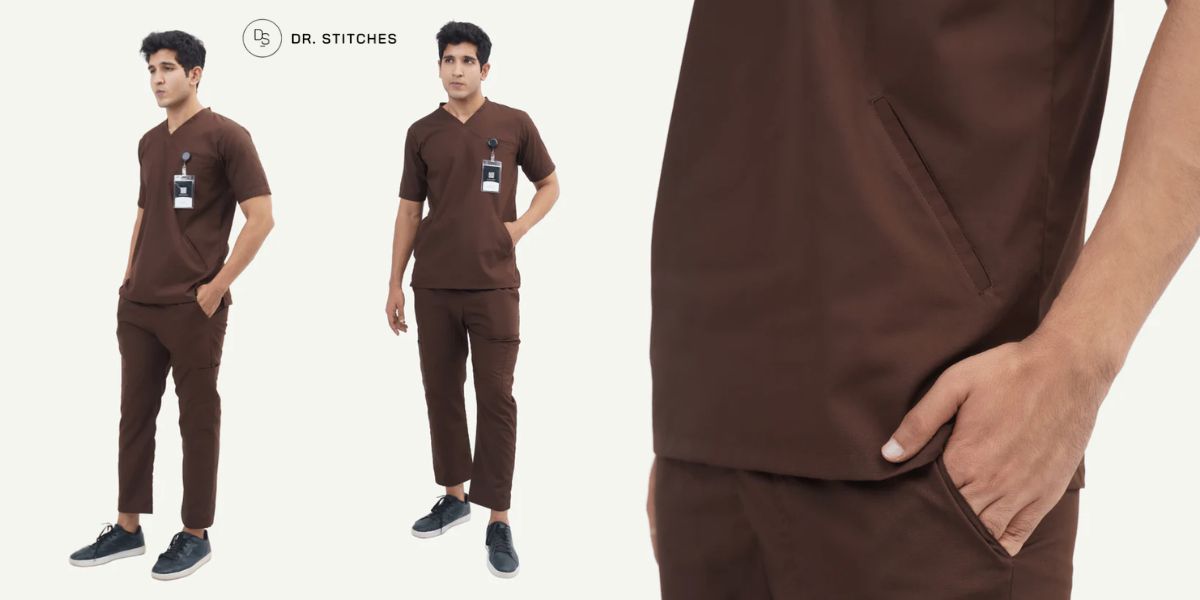The healthcare industry is ever-evolving, and with it, so are the uniforms worn by medical professionals. Gone are the days when hospital attire was simply a white coat paired with uncomfortable, ill-fitting clothing underneath. Today, the scrubs uniform has become a vital part of the healthcare worker’s daily gear, offering a blend of functionality, comfort, and professionalism. But how exactly has the scrubs uniform evolved to meet modern medical needs?
From White Coats to Scrubs: A Brief History
Initially, medical professionals wore white clothing to signify cleanliness and purity. While the white coat is still a symbol of authority in the healthcare field, the uniform beneath it underwent significant changes during the 20th century. The need for hygienic, easy-to-clean, and practical attire led to the adoption of scrubs.
Scrubs—named for their use in “scrubbed” or sterile environments—were originally basic, boxy, and unisex. Function was the sole priority, with little attention paid to fit or style. However, as the medical field expanded and diversified, so did the expectations for the scrubs uniform.
Prioritizing Comfort and Mobility
One of the most noticeable shifts in scrubs design is the prioritization of comfort and mobility. Healthcare professionals often work long, physically demanding shifts that require constant movement. Modern scrubs now come in breathable, stretchable fabrics that allow for better range of motion and all-day comfort. This is particularly important for roles that involve lifting patients, bending over examination tables, or standing for hours in operating rooms.
Male scrubs have especially benefited from these innovations. Unlike the one-size-fits-all styles of the past, today’s male scrubs are designed with tailored fits that accommodate broader shoulders, longer torsos, and other anatomical differences. These ergonomic improvements not only enhance comfort but also boost confidence and professional appearance.
Hygienic and Easy-to-Maintain Fabrics
The COVID-19 pandemic underscored the importance of hygiene and sanitation in healthcare settings. This has led to further innovation in scrub fabrics. Modern scrubs are often made from antimicrobial, moisture-wicking, and wrinkle-resistant materials. These fabrics help reduce the risk of cross-contamination, manage sweat during long hours, and maintain a neat appearance throughout the day.
Easy maintenance is also a significant factor. Scrubs must withstand frequent washing at high temperatures without fading or losing their shape. As a result, manufacturers are investing in durable textiles that can meet the rigorous standards of hospital laundry protocols.
Specialized Features for Different Roles
Today’s scrubs uniform is not a one-size-fits-all solution. Depending on their role, healthcare professionals need different features in their attire. For example, nurses might require multiple pockets for pens, thermometers, and small tools, while surgeons might prioritize streamlined designs that minimize the risk of contamination.
Many male scrubs now come with cargo-style pockets, badge loops, and even tablet compartments, allowing doctors and nurses to carry essential items with them throughout their shift. These tailored features make scrubs not just a uniform, but an integral part of the healthcare professional’s toolkit.
Style and Identity in Healthcare
The shift toward stylish scrubs may seem superficial at first glance, but it plays a crucial role in morale and professional identity. Uniforms can significantly impact how healthcare workers feel about themselves and how patients perceive them. Scrubs that fit well and look good can boost confidence, encourage better posture, and contribute to a sense of pride in one’s work.
Color coding has also emerged as a way to distinguish roles within a hospital or clinic. For example, nurses might wear navy blue, while surgeons wear green, and administrative staff wear gray. This simple but effective system enhances both organization and patient experience, helping patients quickly identify who’s who in a medical setting.
For male healthcare workers, having access to stylish and well-fitting male scrubs breaks the stereotype that medical fashion is only tailored to women. More brands are now offering scrubs designed specifically for men, featuring masculine cuts, robust colors, and performance-focused fabrics.
Sustainability and Ethical Manufacturing
In recent years, the fashion world has faced growing pressure to become more sustainable—and the scrubs industry is no exception. Modern scrubs are now being produced using eco-friendly materials and ethical labor practices. Recycled polyester blends, organic cotton, and water-saving dyeing processes are just a few of the innovations being embraced.
Hospitals and individual professionals alike are becoming more conscious of the environmental impact of their clothing choices. By investing in durable, long-lasting scrubs, they reduce waste and support sustainability without compromising quality or function.
Embracing Technology in Medical Apparel
Some of the latest advancements in scrubs uniforms include the integration of technology. While still an emerging trend, tech-enabled scrubs with smart fabric sensors and temperature regulation are slowly making their way into the market. These innovations could someday monitor vital signs, track movement for ergonomic analysis, or even interact with hospital systems to improve workflow.
While not yet mainstream, the push toward tech-enhanced apparel demonstrates how dynamic and forward-thinking the scrubs industry has become.
Final Thoughts
So, how has the scrubs uniform evolved to meet modern medical needs? The transformation has been profound. From generic, boxy garments to highly specialized, comfortable, and stylish uniforms, today’s scrubs are designed to enhance the performance, hygiene, and identity of healthcare professionals.
For men in the medical field, the development of purpose-built male scrubs represents a significant step toward inclusivity and practicality in uniform design. With continued advancements in materials, sustainability, and technology, the scrubs uniform will likely keep evolving—mirroring the fast-paced and ever-changing world of modern medicine.




